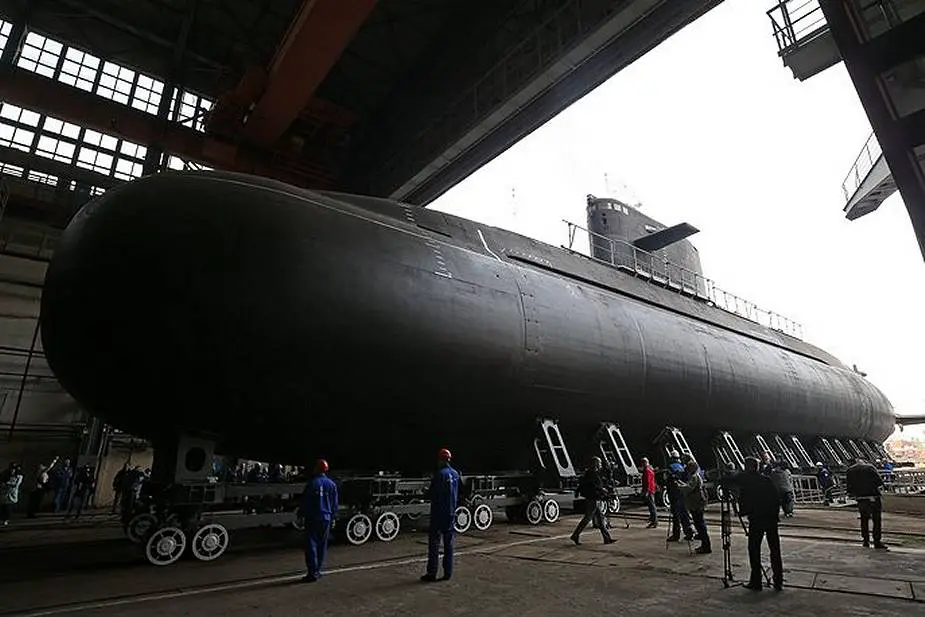Analysis 1/2: Lada-class diesel-electric submarine of project 677 for Russian Navy
It took the Russian Navy over ten years to accept into service a Lada-class diesel-electric submarine of project 677. The St. Petersburg led sub was handed over to the Navy after 11 years of test operation. The Vzglyad business newspaper writes why it took so long and what it means for the Russian Navy.
Follow Navy Recognition on Google News at this link
 The second Lada-class submarine for the Russian Navy was launched in September 2019. (Picture source Twitter account International Naval & Maritime News)
The second Lada-class submarine for the Russian Navy was launched in September 2019. (Picture source Twitter account International Naval & Maritime News)
The new project had to have the latest equipment and arms. The Lada is smaller than project 877 and 636 submarines. It can operate covertly in shallow waters of the Baltic Sea. The submarine had to have an air-independent power plant.
Numerous innovations were used, which have never been installed in submarines before. The untested systems had to be upgraded for many years in the submarine. Not everything went right. Had all the systems of project 677 been tested in advance, the submarine would have joined the Navy in a proper state ten years ago.
The sonar was upgraded to the working condition rather quickly. Media reports said in the early 2010s that St. Petersburg had detected the latest US fourth-generation submarines. There were many more problems with the power plant.
The Kronshtadt first serial submarine of project 677 had to be re-laid. All subsequent subs were laid by a revised project. St. Petersburg will not be rebuilt, but it demands a full-scale medium overhaul and modernization. The time of the overhaul has matured during the test operation.
Should the St. Petersburg have been accepted into service? The answer is yes rather than no, although not all the problems were rectified.
The Navy had to choose either to accept the submarine in the current state or write it down. As project 677 is better than 877 and 636, the Navy made the right choice. However, Russian diesel-electric submarines will not get air-independent power plants in the coming years.
The signing of the acceptance act of the St. Petersburg decided the fate of the submarine and the whole project. All subsequent subs are upgraded. It means the Navy can stop the construction of project 636.3. Experts say it is inferior to project 677. The construction of project 636.3 continued until the fate of project 677 was unclear, as the industry could not offer any other submarine.
The construction of six diesel-electric submarines of project 636.3 for the Black Sea fleet and of three subs for the Pacific fleet was the right decision. Now experts insist it is time to end project 636.3, as there is a new more prospective project.
The construction of the second three project 636.3 subs for the Pacific fleet was a judgment call. Project 677 had to be built instead. It is difficult to change anything now, but the construction of project 636.3 should be stopped. No foreign customer would buy the submarines.
In late August 2020, a contract was signed for the construction of another project 636.3 submarine for the Baltic fleet, however, it has not been laid. It would be logical to replace it with project 677 sub, as it better fits the shallow waters of the Baltic Sea.


























